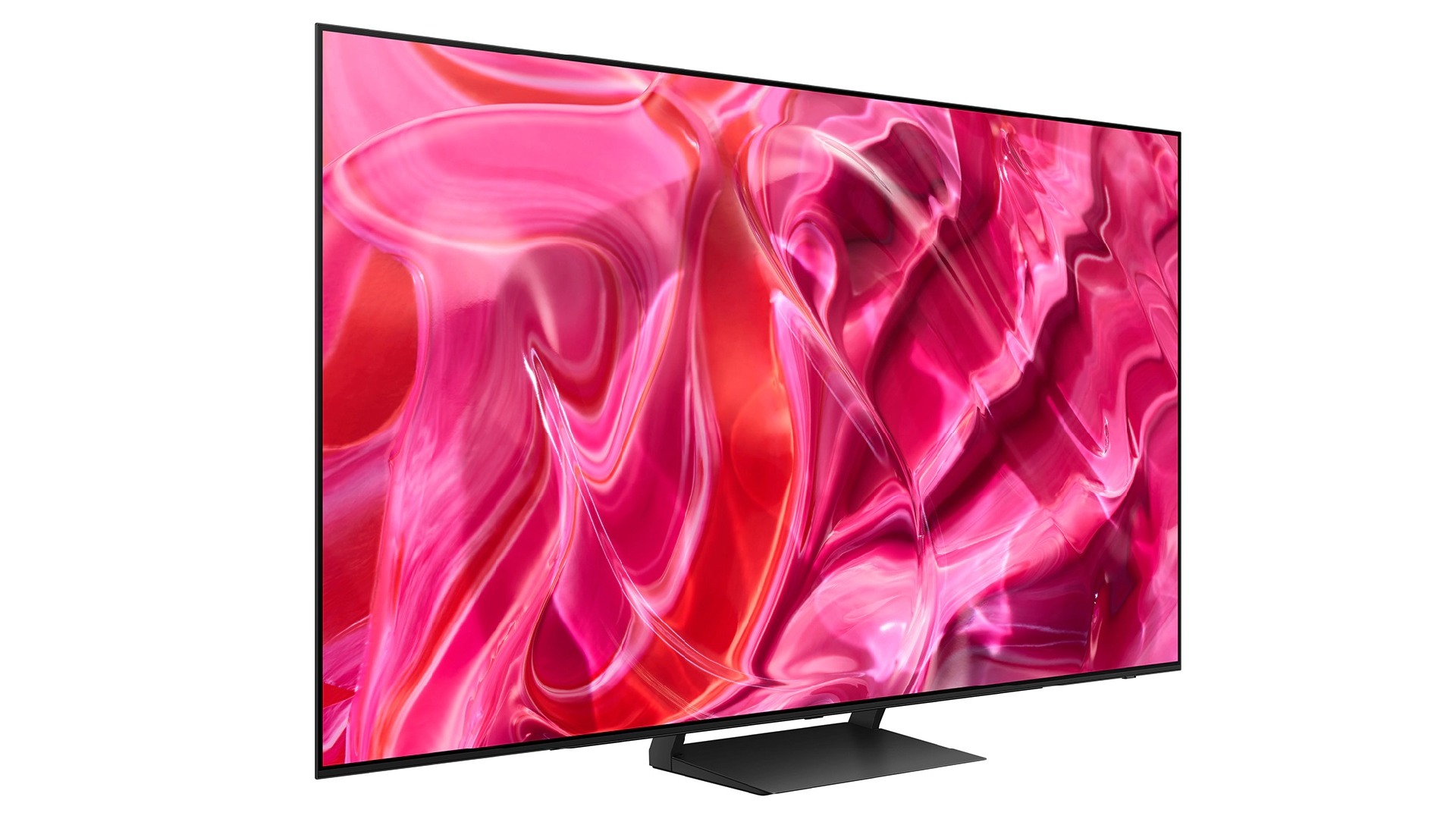I think Samsung’s cheaper S90C OLED TV could be the best TV deal of 2023
Opinion: All eyes on the S90C OLED

During the run-up to the spring TV season, a period that starts when manufacturers announce new sets at the CES trade show in January and ends when they gradually start to roll them out to reviewers for hands-on access, a few models always stand out from the crowd.
One of these is Samsung’s new S95C. I personally anointed this flagship OLED as the best TV of CES 2023 on sight alone, and then proceeded to gush over it in a hands-on S95C OLED TV review I conducted at the company’s New Jersey offices back in February. I expect this model to easily make our list of the best OLED TVs, and it’s also likely to be one of the year’s best 4K TVs.
Our full S95C review is scheduled and will appear here shortly. But as I consider that model in the context of Samsung’s extended TV lineup along with other top TVs from competing manufacturers, I can’t help but think it could end up overshadowed by its lower-cost sibling, the S90C OLED TV.
Samsung wasn’t entirely forthcoming with information on this new step-down OLED model at CES, though we’ve since learned more about it after Samsung made its full 2023 OLED and Neo QLED TV lineup available. We also now have final S90C pricing information:
- 77 inch: $3,599 / NA / NA
- 65 inch: $2,599 / £2,999 / AU$4,299
- 55 inch: $1.899 / £2,199 / AU$3,299

Samsung S90C OLED: what we know
Here are the tech details of the S90C. It uses the same Samsung-manufactured QD-OLED display panel as the S95C, which means it will be capable of delivering better-than-average brightness and retain an enhanced color range even when viewed at extreme off-center seats. Both models have four HDM1 2.1 ports that support 4K up to 144Hz and VRR for gaming, and they also have an ATSC 3.0 tuner for viewing next-gen digital TV broadcasts in the US.
A main area where the S90C differs from the S95C is its design. The S95C has an almost impossibly thin form factor owing to Samsung’s use of an external Slim One Connect box for input connections, while the S90C has a necessarily more bulky design due to its built-in connections. Even so, the S90C’s depth measures a mere 1.6 inches – slim for a TV by any standard.
Samsung’s specs state that the S90C uses a Quantum HDR OLED algorithm for processing high dynamic range content, while the S95C uses a more advanced Quantum HDR OLED Plus algorithm. Is there a big difference between the two in peak brightness when viewing programs with HDR? That will be hard to say until we measure the S90C, but the S95C’s peak light output was 1,374 nits in our hands-on test, while last year’s Samsung S95B OLED TV measured 1,060 nits when we reviewed it.
Sign up for breaking news, reviews, opinion, top tech deals, and more.
Samsung S90C OLED: how it stacks up

The S95B featured the same basic Quantum HDR OLED algorithm found in the S90C, so the S90C should at least match that model for peak brightness. Looking over the other OLED competition, the LG C3 measured just above 800 nits when we tested it, while the LG G3, a model with a new optical component and a light-boosting algorithm known as Micro Lens Array and META tech, respectively, is expected to reach 1,300 - 1,400 nits – about the same as the new Samsung S95C OLED.
Samsung’s S90C is priced $600 less than its flagship S95C OLED for the 55- and 65-inch models, and $900 less for the 77-inch model. That’s a fairly significant price difference when you consider that the S95C’s main advantages are somewhat higher peak brightness (assuming that the S90C matches last year’s S95B in that respect) and a sleeker design.
The S90C series is also priced exactly the same as LG’s C3 series in the US at all screen sizes, making the C3 the S90C’s main competitor. As we determined in our review, the C3 is an excellent TV, and one that offers a few enhancements over the LG C2, our top TV pick of the year for 2022. But compared to the Samsung S90C, the C3 has lower peak brightness (an assumption that still needs to be validated by testing) and less dynamic color reproduction at extreme off-center seats due to LG’s use of a W-OLED display panel.
Which new OLED TV will be the best buy this year? We already got a very good sense of what the Samsung S95C is capable of in our hands-on test, and recently awarded the LG C3 4.5 stars in our full review.
If the Samsung S90C meets our expectations when it comes to peak brightness and other performance criteria when we finally get a sample in to review, at its current pricing it will be an excellent value – and quite possibly the best TV deal of 2023.

Al Griffin has been writing about and reviewing A/V tech since the days LaserDiscs roamed the earth, and was previously the editor of Sound & Vision magazine.
When not reviewing the latest and greatest gear or watching movies at home, he can usually be found out and about on a bike.